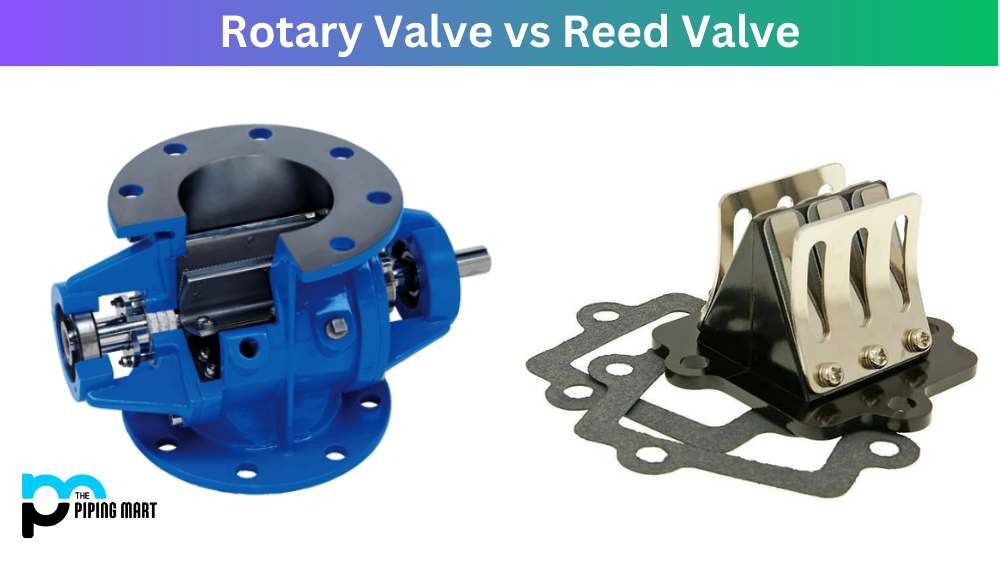When powering an engine, choosing the right valve is crucial. The two most common valves you’ll encounter are rotary and reed valves. Each has its unique design and operates differently from the other. In this blog post, we’ll dive into the details of rotary valves vs reed valves so that you can make an informed decision based on your engine’s specific needs.
Rotary Valve
A rotary valve is a device used to control the flow of gases and liquids. It rotates a small disc or vane inside the valve’s body, opening and closing ports to regulate fluid flow. Rotary valves are commonly used in industrial applications like oil and gas processing, HVAC systems, and pumps.
Reed Valve
A reed valve is a check valve that uses flexible metal blades to block gas or liquid flow in one direction while allowing it to pass through in the other. This mechanism helps keep fuel and air mixtures within their optimal range, providing efficient operation and fewer emissions.
Differences between Rotary Valve and Reed Valve
Firstly, let’s break down the basic design difference between rotary and reed valves. Rotary valves rely on a rotating cylinder to control the intake and exhaust flow, while reed valves utilize thin strips of reeds to control the air intake. The benefit of a rotary valve is that it allows for more precise control of the air/fuel mixture, improving engine efficiency. On the other hand, a reed valve is generally more reliable and requires less maintenance as it has fewer moving parts.
Performance
In terms of performance, both valve types have their pros and cons. A rotary valve can provide a wider power band, meaning the engine can operate at a wider range of RPMs. This can result in better overall performance, especially in high-performance engines. However, rotary valves can also be more complex and heavier, limiting their suitability for specific engine types. On the other hand, Reed valves may not provide the same power level but are simpler and more lightweight, making them ideal for smaller engines.
Cost
Another important factor to consider is the cost. Rotary valves are generally more expensive due to their complex design and manufacturing process. On the other hand, Reed valves are simpler and less expensive to manufacture, which can result in a lower price point. However, this varies depending on the specific brand and model you are looking at.
Maintenance
Regarding maintenance, both valves require regular cleaning and inspection to function properly. A rotary valve can be more challenging to maintain due to its intricate design, whereas a reed valve can be easily replaced. It’s important to choose a valve type that you feel comfortable maintaining and have easy access to replacement parts.
- Rotary valves are more efficient than reed valves.
- Rotary valves can handle higher temperatures than reed valves.
- Rotary valves have fewer moving parts than reed valves.
- Rotary valves are more durable than reed valves.
- Rotary valves are easier to maintain than reed valves.
- Rotary valves can be used with a broader range of materials than reed valves.
- Rotary valves are more versatile than reed valves.
- Rotary valves are better suited for high-performance applications than reed valves.
Conclusion
When it comes down to it, there is no one-size-fits-all answer for choosing between a rotary valve and a reed valve. It all comes down to the engine’s specific requirements and your personal preferences. A rotary valve may be the best choice if you want more precise control and better performance in a high-performance engine. However, a reed valve may be more suitable if you prioritize simplicity, reliability, and cost-effectiveness. Ultimately, it’s essential to research and consults a trusted expert to make the best decision for your engine.

Abhishek is a seasoned blogger and industry expert, sharing his insights and knowledge on various topics. With his research, Abhishek offers valuable insights and tips for professionals and enthusiasts. Follow him for expert advice on the latest trends and developments in the metal industry.




